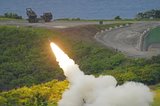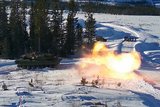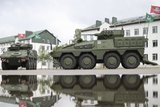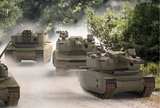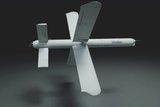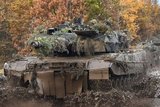Raytheon delivers C-UAS laser system to USAF
Raytheon has delivered a high-energy laser counter-UAS system to the US Air Force, the company announced on 22 October.
The system is now set for an overseas deployment as part of a year-long air force experiment to train operators and test the system's effectiveness in real-world conditions.
Raytheon's high-energy laser weapon system uses an advanced variant of the company's multi-spectral targeting system, an electro-optical/infrared sensor, to detect, identify and track rogue drones. Once targeted, the system engages the threat and neutralises the UAS.
The company installed its high-energy laser weapon system on a small all-terrain vehicle. On a single charge from a standard 220-volt outlet, the system can deliver ISR capability and multiple precise laser shots. It can also be paired with a generator to provide a nearly infinite number of shots.
Roy Azevedo, president of Raytheon Space and Airborne Systems, said: ‘Five years ago, few people worried about the drone threat. Now, we hear about attacks or incursions all the time. Our customers saw this coming and asked us to develop a ready-now counter-UAS capability. We did just that by going from the drawing board to delivery in less than 24 months.’
Related Equipment in Defence Insight
More from Land Warfare
-
Germany signs multi-billion-dollar deals for 6x6 CAVS and GDELS Eagle vehicles
The order is a further boost for the Common Armoured Vehicles System programme which has notched notable successes in the past 12 months. The first vehicle, made in Finland, will be delivered next year with local production expected to ramp up in 2027.
-
![Rheinmetall and KNDS tank tie-up narrows trans-European options]()
Rheinmetall and KNDS tank tie-up narrows trans-European options
The French and German governments signed an agreement in June 2018 to cooperate on the development of a new main battle tank under the Main Ground Combat System programme but the effort has struggled. This new agreement may damage it further.
-
![Hungary set to begin using Hero 400 loitering munitions]()
Hungary set to begin using Hero 400 loitering munitions
Developed by Israel's Uvision and with systems being sold in the thousands to multiple European NATO countries and the US, the Hero family of loitering systems is also in production in the US and Italy, the latter through Rheinmetall.
-
![Croatia orders Leopards and CAESAR howitzers as Lithuania orders more CAESARs]()
Croatia orders Leopards and CAESAR howitzers as Lithuania orders more CAESARs
The Leopard is becoming the tank of choice in central and eastern Europe as Croatia joins Lithuania, the Czech Republic and Hungary in ordering the platform. Lithuania and Croatia have also signed for CAESAR howitzers.
-
![Light Reconnaissance Strike – enabling a vital mission set (Studio)]()
Light Reconnaissance Strike – enabling a vital mission set (Studio)
A new system-of-systems concept will unlock digital integration of sensors and weapons for Light Forces, allowing them to shape the battlefield environment on their own terms and upgrade legacy platforms.










